Avoid Plagiarism in Your Government Research Work: Essential Strategies and Tools
Ashley Merit
Content writer and editor for Netus.AI
Table of Contents
Avoid Plagiarism in Your Government Research Work. Plagiarism poses a significant risk to researchers in various fields, including government research. Researchers often consult pre-existing documents to support their arguments, and while using such information can strengthen their points, proper credit must be given to the original authors to avoid plagiarism. Sensitive or highly important subjects, commonly found in government research, may have researchers examining documents or official reports from various sources. It is crucial for researchers not to copy this information directly, as it may result in legal consequences and potentially derail their projects.
Moreover, investing time, knowledge, and effort into their research projects makes it essential for researchers to be cautious about plagiarism in government research. As they navigate through the research process, the adherence to ethical guidelines and academic integrity should always be maintained. This allows researchers to avoid committing plagiarism and present their findings credibly while acknowledging the contributions of others in their field.
Key Takeaways
- Researchers must acknowledge the original authors to avoid plagiarism when using pre-existing documents for supporting their ideas.
- Government research often involves sensitive and important topics, necessitating extreme caution in handling and presenting information.
- Upholding academic integrity and ethical guidelines is essential in maintaining credibility while conducting quality government research.
Incidents of Plagiarism Across Government Research
Plagiarism incidents in government research may not be widely publicized to protect confidentiality, but they still occur. Researchers must be careful to properly attribute sources when using literature or reports from other organizations. Plagiarism can occur in various forms, such as:
- Unintentional: Failing to properly credit the original author or organization providing the data.
- Intentional: Deliberately copying and pasting material without proper attribution.
- Self-plagiarism: Reusing own work from previous publications without disclosing that it is a duplicate.
To avoid academic dishonesty and potential legal consequences, researchers should be fully aware of the different types of plagiarism and take measures to ensure their manuscripts remain original and properly cited.
Measures to Curb the Spread of Plagiarism
Researchers working on government-funded projects or those involving sensitive information need to be cautious about plagiarism. To mitigate the risk of plagiarism and its consequences, various techniques can be employed to ensure proper citation and crediting of sources. Here are some essential measures that can help minimize plagiarism in research.
- Divide the Topic into Smaller Sections: Breaking down the subject into smaller sections and addressing specific questions throughout the paper can help guide the research and facilitate accurate referencing.
- Keep a Record of References: A well-organized list of reference materials keeps track of sources, making it easier to credit and cite appropriately later.
- Properly Cite Quotes and Data: When quoting or using data from other works, it’s vital to give credit to the original author or institution. This includes mentioning publication details such as the title, author, page number, publication date, edition, and any other relevant information.
- Choose Correct Citation Styles: Different citation styles exist, such as APA, Chicago, and MLA. Choose the appropriate one based on project requirements or personal preference.
- Cite Online Journals: Online resources also need proper citation, including the date of access.
- Include Government Reports: When using government reports, be sure to cite them correctly, providing all necessary information.
- Avoid Misquoting: Misquoting lines or inadequate citation can lead to plagiarism. Always double-check quotes for accuracy.
- Utilize Technology: Online plagiarism checker tools can help detect unintentional plagiarism more efficiently than manual searches.
Remember that merely paraphrasing or rephrasing sentences without giving proper credit is considered a form of plagiarism. Researchers should always credit the source for paraphrased content to mitigate the risk of plagiarism in government documents. By following these measures and maintaining a confident, knowledgeable, and clear tone in their writing, researchers can successfully curb the spread of plagiarism and produce high-quality, original work.
How to Handle Plagiarism Using Online Tools
In order to maintain the integrity and confidentiality of government documents, researchers should ensure that their work is free from plagiarism. Utilizing online tools can provide them with an effective solution to identify duplicated content and ensure originality.
One recommended tool for secure and efficient plagiarism detection is Copyleaks. It preserves data security by not storing uploaded content on third-party platforms. Researchers can confidently use this tool without worrying about the confidentiality of their documents.
Before submitting content to a plagiarism checker, it’s important to address any spelling and grammatical errors in the document. Inaccurate or poorly written content might lead to false results or hinder the ability of the tool to detect plagiarism. Online spell checkers and grammar checkers can be used to help with this step.
After reviewing the document for punctuation and grammar, researchers can upload their files to the plagiarism detection tool. If the document is in printed format, photographs of the text can be uploaded as well.
The plagiarism checker will scan the document, comparing it with other online sources to identify any duplicated content. It will highlight any similarities and provide the sources of the original content. This allows researchers an opportunity to correctly cite sources and make appropriate adjustments to their work.
When quoting or paraphrasing from other sources, proper in-text citations and reference lists are crucial to avoid plagiarism. Citation tools, like Scribbr Citation Generator, can help format citations in the desired APA or Harvard styles. Additionally, citation checkers can be used to verify the accuracy of existing citations.
By using these online tools for plagiarism detection, citation generation, and document review, researchers can produce high-quality, plagiarism-free work that demonstrates integrity and originality.
Frequently Asked Questions
Ensuring Proper Citation in Government-Related Documents
- Always acknowledge the original source of information
- Familiarize yourself with the citation style recommended for government publications
- Maintain a comprehensive reference list
- Use quotation marks for direct quotations
Recommended Citation Styles for Government Research Publications
- American Psychological Association (APA) style
- Modern Language Association (MLA) style
- Chicago Manual of Style (CMS)
Effective Paraphrasing Techniques in Government Studies
- Thoroughly understand the original content
- Write in your own words and avoid using the original phrasing
- Incorporate relevant terminology
- Double-check the accuracy of your paraphrased content
Best Practices for Documenting Sources in Government Research
- Maintain a detailed bibliography
- Consistently use the chosen citation style
- Include in-text citations
- Provide context for the cited information
Utilizing Plagiarism Detection Software in Government Research Paper Reviews
- Check submitted work against existing publications
- Establish acceptable similarity thresholds
- Utilize multiple plagiarism detection tools
Consequences of Plagiarism in Government-Funded Research Projects
- Loss of funding and project cancellation
- Damaged professional reputation
- Legal consequences, including fines and potential imprisonment
- Academic penalties, such as failure of the project, class, or program
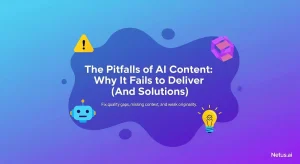
The shortcomings of content generated by AI | NetusAI
Discover why fast, high-volume AI content often fails to deliver real results. Learn about the crucial missing feedback loop and how implementing performance tracking can transform your AI content strategy.
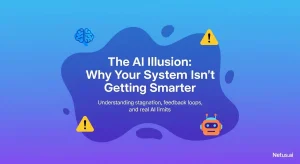
The illusion of AI: Your system's intelligence gap | NetusAI
Stop wasting marketing spend! Most AI tools don’t learn from results, causing content stagnation and low engagement. Discover why your generative AI isn’t getting smarter and what system actually learns and optimizes content.
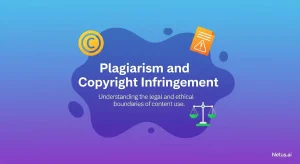
Plagiarism and copyright infringement | NetusAI
Learn the distinct differences between plagiarism and copyright infringement. Understand the ethical and legal implications and get practical strategies for avoiding both academic and creative work with NetusAI.

Tips and strategies for mobile content marketing | NetusAI
Optimized for mobile-first indexing, learn 5 essential strategies to capture attention, enhance engagement and drive leads and sales with your mobile content marketing.
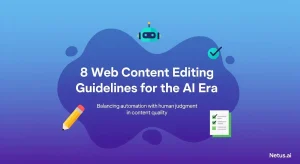
Web content editing guidelines for the AI era | NetusAI
Review web content editing guidelines for the AI era. Learn how to edit AI-generated content, ensure authenticity and optimize for SEO and readability.
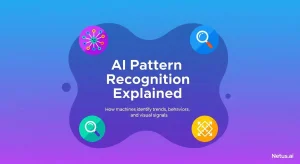
Explaining AI pattern recognition | NetusAI
AI pattern recognition enables machines to identify trends for diverse applications, from detecting plagiarism to fraud. Discover its processes, models and real-world benefits.
